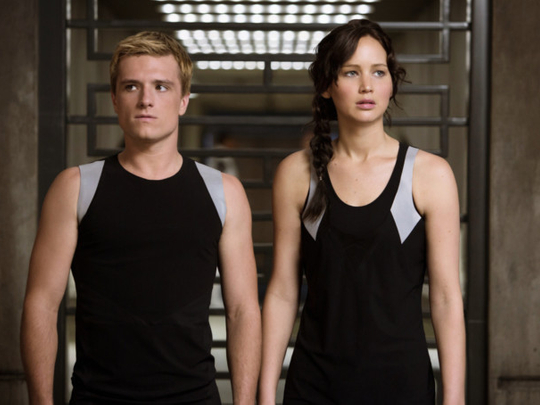
Harry Potter started it, and now it’s bedevilling The Hunger Games too. But the trend for dividing in two the last film of a series (see also The Twilight Saga) has less to do with story-tellers indulging our appetite for delayed gratification and more to do with executives enriching themselves.
They’re even at it on television, brutally chopping in two the final seasons of the US dramas Mad Men and Breaking Bad.
The irony in the case of The Hunger Games: Mockingjay — Part 1 (not quite the most cumbersome of film titles, but not far short) is that the third of Suzanne Collins’ trilogy of fantasy novels is by some distance the least satisfying. The main problem, on screen as in the book, is that the Hunger Games themselves are well and truly over.
For the uninitiated, these were a kind of macabre Olympics, a televised fight to the death set in the post-apocalyptic totalitarian state of Panem. The star performer in these Games was the sexy and resourceful Katniss Everdeen, who, as played by the beguiling Jennifer Lawrence, became an inspiration to millions of teenagers all over the world. And not only teenagers. The first two Hunger Games films took over £1 billion (Dh5.8 billion) at the global box office. Hence the cynical decision to give us two more.
Even more cynical, indeed downright irresponsible, was the decision to give the first two films 12A certificates. They were filled with images highly unsuitable for children, not least a pack of rabidly savage monkeys that were the stuff of nightmares even for adults.
Here, there is evidence that director Francis Lawrence has taken heed of the criticism. There is significantly less actual violence than before — but some highly disturbing images of death, and one sequence in which Katniss is strangled is as unpleasantly graphic as anything we have seen before. For almost half of this film’s two-hour running-time, however, there is scarcely any action at all.
Instead, it unfolds as a psychological thriller, and a study of post-traumatic stress syndrome. Katniss’s beloved co-victor in the Games, Peeta Mellark (Josh Hutcherson) is being held prisoner, and may or may not have been brainwashed.
Meanwhile, the leaders of Panem’s District 13 — Alma Coin and Plutarch Heavensbee, played by Julianne Moore and, in his final role, the late Philip Seymour Hoffman — persuade a reluctant, vulnerable Katniss to be the flag-waving figurehead — the so-called mockingjay — in a rebellion against the state.
A series of propaganda films are made, eerily and I’m sure deliberately evocative of Leni Riefenstahl’s 1935 film glorifying the Nazis, Triumph of The Will. Except that these “propos”, as Heavensbee calls them, are in a noble cause.
As the rebellion gathers pace, the running, chasing, shooting and bombing gets cranked up. But I thought this a more laborious piece of story-telling than either of the first two films.
On the other hand, the relative paucity of action means more screen time for the ever-excellent Moore (making her Hunger Games debut), and for Donald Sutherland, who plays the despotic President Snow as if he’s been waiting for the role all his life.
Better still, it affords a proper valediction for Hoffman, to whom the film is dedicated and who emotes more with one amused twitch of a shaggy ginger eyebrow than many actors do with a whole repertoire of grimaces.
But it’s Lawrence’s show again. She’s 24 now, and given how much she has done since the first Hunger Games film in 2012, just passing herself off as a teenager is an achievement.
I wait with almost-bated breath for part two, a year from now. But I wish I didn’t have to.










